by Christie Purifoy | May 3, 2014 | Books, children, Food, Gardening, Spring, Uncategorized
Let’s all spread a blanket on some fresh spring grass and read a book, shall we?
Not sure what to read? Let’s see if I can help you with that. Not only am I recommending a few of my favorite recent reads (books with this season very much in mind), but I am GIVING AWAY FREE BOOKS.
Do I have your attention? Read to the end for all the details. And, as always, remember that I use affiliate links in each new edition of These Farmhouse Bookshelves. You can find more information about that right here.
*
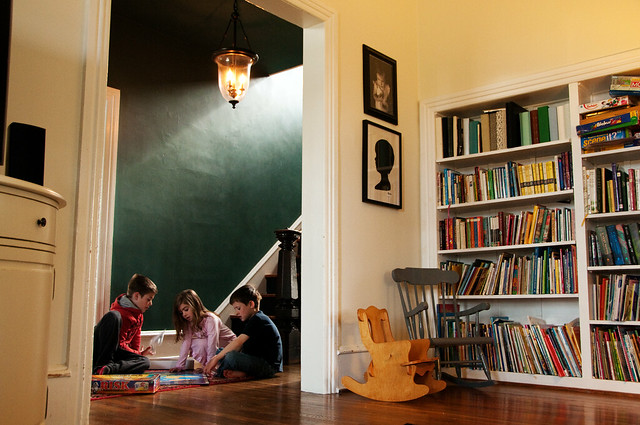
*
Recently, my sister Kelli sent us this first book as a gift (yes, the same sister of photography fame). It’s a picture book, but it was pretty much my lifeline during those last few horribly brown pre-spring days. The kids love it, too.
And Then It’s Spring (Booklist Editor’s Choice. Books for Youth (Awards)) by Julie Fogliano and illustrated by Erin Stead is a gorgeous, award-winning, treasure of a book. I recommend it for kids and for any big people in your life who love spring or gardening or quietly humorous storytelling.
by Julie Fogliano and illustrated by Erin Stead is a gorgeous, award-winning, treasure of a book. I recommend it for kids and for any big people in your life who love spring or gardening or quietly humorous storytelling.
This is a far cry from captain-underpants and diary-of-a-wimpy-kid humor, but it had my own kids howling. And then breathing very quietly and asking questions about the seasons and how plants grow. So, pretty much a winner.
… it is still brown, but a hopeful, very possible sort of brown … – Julie Fogliano
I discovered this next writer, and her debut book, at the recent Festival of Faith and Writing at Calvin College in Grand Rapids, MI. This book may have been the very best thing about that festival (though I hesitate to quantify an experience that was full to overflowing with Very Good Things).
Things That Are by Amy Leach is not like anything you have ever read. I promise you that.
by Amy Leach is not like anything you have ever read. I promise you that.
First, it is a beautiful book. Lovely to hold and with elegant, whimsical illustrations. A book-lover’s book.
Second, the writing is startling. Every single word is surprising and unanticipated. Hilarious and wise. Leach makes me laugh out loud and reminds me of the power words have to stab me straight through the heart. This book is a marvel.
What is it, exactly? It’s like a cross between a PBS nature documentary and Lewis Carroll. Except, so much better. So much wiser. Leach writes about nature – everything from panda bears and sea cucumbers to caterpillars and pea vines. She isn’t writing about people, except that she is. This is a book about the beautiful strangeness of our world and how much we can learn by taking a very close look at the creatures all around us.
Things That Are stretches the English language to its most delightful limits. This is nature writing as poetry, and each essay deserves to be read out loud.
Haywire personalities like peas, wobbly personalities with loose ends, iffy ends, result not from having no aim, no object in life, but from having an extrasensory object. What they want is beyond their powers of apprehension – until they hold it in their acute green wisps- so their manner is vagabond. The personality that longs only for perceptible things is down-to-earth, like a dung eater. But the teetery-pea kind send out aerial filaments to hound the yonder, tending every which way, guessing themselves into arabesques, for they are fixed on the imperceptible. – Amy Leach
Amy Leach sat right next to Fred Bahnson for one of my favorite panel presentations of the festival. I am also recommending his book Soil and Sacrament: A Spiritual Memoir of Food and Faith . If you enjoyed Barbara Kingsolver’s Animal, Vegetable, Miracle: A Year of Food Life
. If you enjoyed Barbara Kingsolver’s Animal, Vegetable, Miracle: A Year of Food Life then I’m sure you will appreciate Bahnson’s own memoir which explores the spiritual dimensions of the same subject (and if you haven’t read Kingsolver’s book please do go and rectify that).
then I’m sure you will appreciate Bahnson’s own memoir which explores the spiritual dimensions of the same subject (and if you haven’t read Kingsolver’s book please do go and rectify that).
In Bahnson’s words, this book is written from the perspective of a “pilgrim” and an “immersion journalist.” He tells his own stories, but he tells the stories of many others around the world who have discovered the sacredness of the dirt under our feet. This is a diverse bunch. There are mushroom-cultivating monks, metal-head, ex-con coffee roasters, maiz-growers in Mexico and Honduras, Pentecostal farmers, and Jewish growers of organic vegetables.
Gardeners and foodies will automatically appreciate this book, but I think it deserves a much wider audience. This book is also for all those interested in peacemaking and justice.
Beyond even that, this is a book about our spiritual origins. As Bahnson describes so eloquently, one of humanity’s oldest stories tells us something about ourselves that remains vitally important: we are the Adam who was created from the adamah. We are humans made of humus. Our spiritual and physical lives depend on the soil too many of us find it easy to ignore and abuse.
Our ecological problems are a result of having forgotten who we are – soil people, inspired by the breath of God. – Fred Bahnson
Now, on to the details you’ve been waiting for … free books.
The first giveaway is straight from me to you. I want to say thank you for reading these book recommendation posts, for sharing your own recommendations with me, and for clicking on those amazon affiliate links!
Also, I love Amy Leach’s book so much I want to share it with one of you. Leave a comment on this post, and you are automatically entered to win a copy. It will be very professional and unbiased and probably involve names in a hat.
The second giveaway is courtesy of Moody Publishers and my fellow writer Hannah Anderson. I’ve appreciated Hannah’s contributions at Pick Your Portion (we are both regular contributors there), and she has just written an eloquent and important book.
Conversations about women, the church, and identity tend to focus on roles or categories or accomplishments. I happen to think that those are very important topics of debate, and I love the books that shine new light on old conversations. But Anderson sets up camp somewhere else entirely, and we need that too. Made for More: An Invitation to Live in God’s Image explores a woman’s identity as first a person and an image bearer of a glorious God.
explores a woman’s identity as first a person and an image bearer of a glorious God.
This is an inspiring, encouraging, beautifully written book. Again, leave a comment on this post, and I’ll stick your name in the hat for a chance to win your own copy.
I’ll leave comments open for a week. Leave your comment before Friday, May 9 at 11:59 pm.
Good luck and happy reading!
by Christie Purifoy | Mar 4, 2014 | children, Lent, Uncategorized
Our dinner-table conversations with the kids seem to pivot between the ridiculous and the ultra serious. There is no in-between. Either, there are jokes about Thomas the Train crossing the road or there are existential complaints about prayer.
Why do you say we should listen to God when I can’t hear him? even the four-year-old wants to know.
I Don’t Know what His voice sounds like! another child chimes in.
In all honesty, even our serious conversations collapse toward the ridiculous until I, utterly exasperated, announce:
“Let those who have ears to hear, hear! Now clear the table.”
***
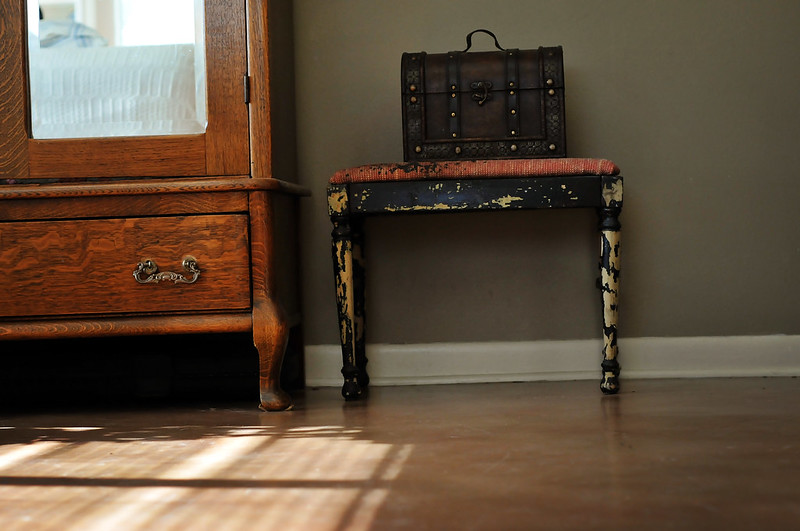
***
Snow is falling again. The world outside my window is dusted in silence, but I am listening. I am waiting for the wind to “shake a thousand whispers from the yew,” as T.S. Eliot writes in “Ash Wednesday.” Specifically, I want to hear a whisper about Lent. It is nearly here, and I don’t yet know how to set the time apart.
I still believe in sacred time, though I live in a world of Sunday-morning swim meets and Sunday-afternoon birthday parties. I know that, without some effort on my part, all time looks the same whether or not it is the same.
And yet, every year I seem to arrive at Ash Wednesday utterly emptied. Without even the energy to give up chocolate or add in more prayer or commit to some act of service. Whereas Advent fills me to overflowing with words and ideas and inspiration (so much so that I have blogged every day of Advent for three years running), Lent finds me spent. Dry.
Lent finds me listening to silence, desperately hoping that silence has something to say. That it isn’t the absence it sometimes seems to be.
***
When I picture that forehead smudge of ash, I hear the words of one of our oldest Christian hymns: “Let all mortal flesh keep silence.” I am dust and dust I will be again, and there seems nothing else to say. I will keep silence.
But I am a reader and a writer, and what it means to keep silence is complicated. Perhaps, it is always complicated, for each of us.
Silence might be the fruit of humility, but I can remember using it as a weapon. When I was a girl with two younger sisters I wielded my ability to hold my tongue like a sword. I may have been just as responsible for the argument, but if I whispered while she yelled, I would appear innocent when our parents doled out punishment. I was the evil queen of silence.
For years I told myself I would never write on the internet – I would keep silence – but my reasons were selfish. I was afraid to be that vulnerable. I was afraid to risk looking like a fool. Silence as shield. Silence as upper hand.
***
I seek an invisible God, and I must not forget that. Of course, there is little danger of this thanks to my small dinner companions. Even the four-year-old cries Why can’t I SEE Him? Why can’t I HEAR Him?
Why, indeed, dear one.
To remember his invisibility and his silence is not to keep him at a distance. Far from it. It is the reminder I need to look hardest from the corner of my eye. To observe closely the spaces between those things right in front of my face.
He hides, but he hides in plain sight.
He is silent, but He is the Word.
This is what I want my children to know: Believe that He can be found, and you will find Him.
***
Suddenly, my calendar is overfull. I said yes, and yes, and yes, and now I am staring down a Lenten gauntlet of circled dates and fiercely scribbled reminders.
But I think it will turn out fine. The trick, I am learning, is to focus on the spaces between. The gaps. The pauses. The moments that leak silence.
Ash Wednesday is the first rupture, the first crack in the usual order of things, and I will welcome it. I may have no plan. I may have no energy to implement even the plan I do not have. But these forty days are set apart.
Sacred days for seeking.
Sacred days for finding.
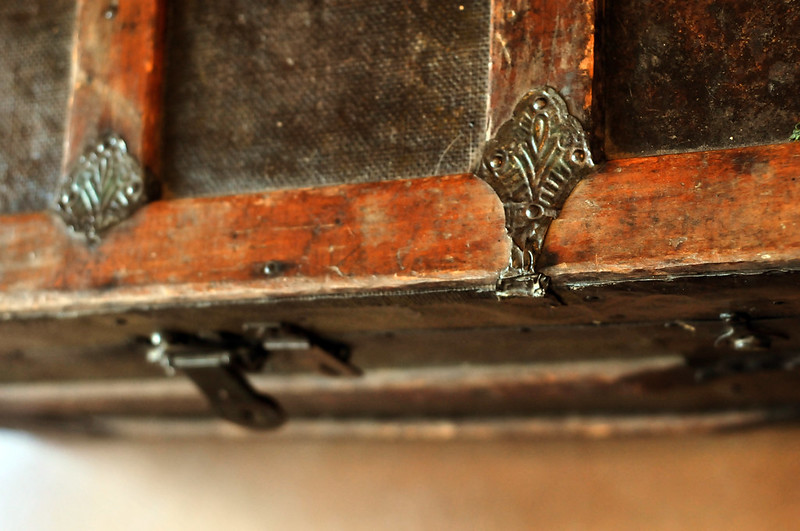
***
by Christie Purifoy | Feb 14, 2014 | children, Community, Gardening, motherhood, Uncategorized
It’s Valentine’s Day, and I’m sharing a story of friendship. Really, though, I’m telling you that carrots are the new roses, and I want to give 250 South African orphans and vulnerable children a garden. A garden! Of course, I can’t do it on my own. But Valentine’s Day is just the day for acknowledging that I am not alone, and you are not alone, and those children? Not alone. Not forgotten. Join me?
When I first met Lisa-Jo, she was an attorney at a powerful Chicago law firm and I was a PhD candidate at an elite university. We were both pursuing Big Plans, and we were both very far from home. Though, admittedly, Lisa-Jo’s family in South Africa were just a wee bit farther away than my own in Texas.
Recently, she and I talked about those long ago young women and what they would think of our current lives. We agreed they would be horrified.
Which is only one more reason why I’m glad I don’t have final control over my life. Left to my own devices, I would never even have discovered my dreams, let alone seen them realized.

(photos courtesy of Lisa-Jo Baker)
Back then Lisa-Jo was determined never to be a mother. I was desperate for kids but couldn’t get pregnant. We got to know one another in a church small group for young married couples. Over the course of only a few weeks, most of those couples, two by two, announced unexpected pregnancies. Lisa-Jo and I became like storm-tossed survivors clinging to the same life preserver.
I will always be grateful for the wreck of those days, for the way unhappiness tossed us together. And I will always be grateful for the many ways in which Lisa-Jo held on to me, and to our friendship, despite the travels and adventures, the heartaches and the joys to come.
Today, she is not an attorney and I am not a professor, and when we spend time together, there are seven children tugging at our elbows. I don’t think either one of us will ever stop feeling surprised at the way things have turned out. I know we will never stop being grateful.
In fact, surprise and gratitude are at the heart of Lisa-Jo’s new book. You can pre-order a copy of Surprised by Motherhood: Everything I Never Expected about Being a Mom , and I highly recommend that you do. I am lucky enough to have read an early copy, and it is a powerful story, beautifully told.
, and I highly recommend that you do. I am lucky enough to have read an early copy, and it is a powerful story, beautifully told.
It is a memoir of motherhood, and there is a lot of pink on the cover, but I hope that many men will find this book as well. Lisa-Jo’s is a story that speaks especially to mothers, but, like all good stories, it is for everyone.
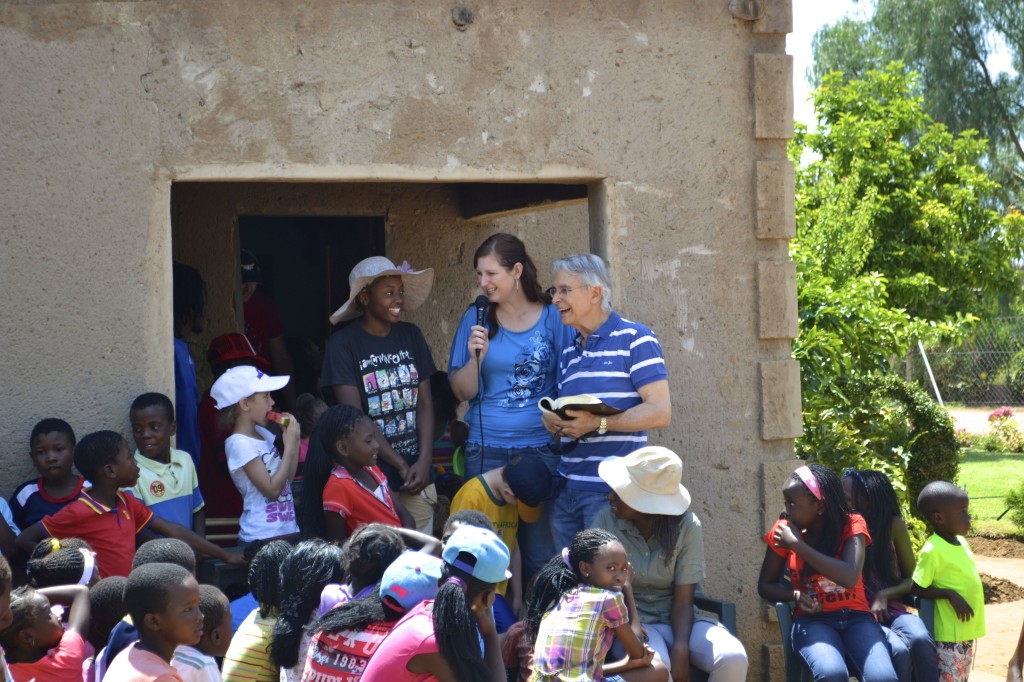
Today is Valentine’s Day, and I can’t think of a better way to mark that holiday on this blog than by telling you about the great big love flash mob being organized by my friend Lisa-Jo. Thanks to her vision and hard work, you and I have the opportunity to send – not roses – but an entire garden. And we get to send that garden to a community in South Africa eager to plant and cultivate and harvest.
We want to give a garden to the orphans and vulnerable children of the Maubane Community Center. The cost is $5000. We want to do this in one day.
It’s happening here.
by Christie Purifoy | Jan 29, 2014 | children, Home, Pennsylvania, Uncategorized, Winter
I grew up without winter. For the most part, at least.
Winters in central Texas were brown and chilly, but you never knew when it might hit eighty degrees. In December, we never bothered to ask for a white Christmas. Instead, I would secretly pray that it wouldn’t be so warm we’d need the air conditioner. Even at eight years old, I found air conditioning very depressing.
As a young girl I read every one of Laura Ingalls Wilder’s books repeatedly. But I read The Long Winter more than any other. It isn’t a pretty story, far from it, but something about the extreme cold and snow fed my soul. Even then.
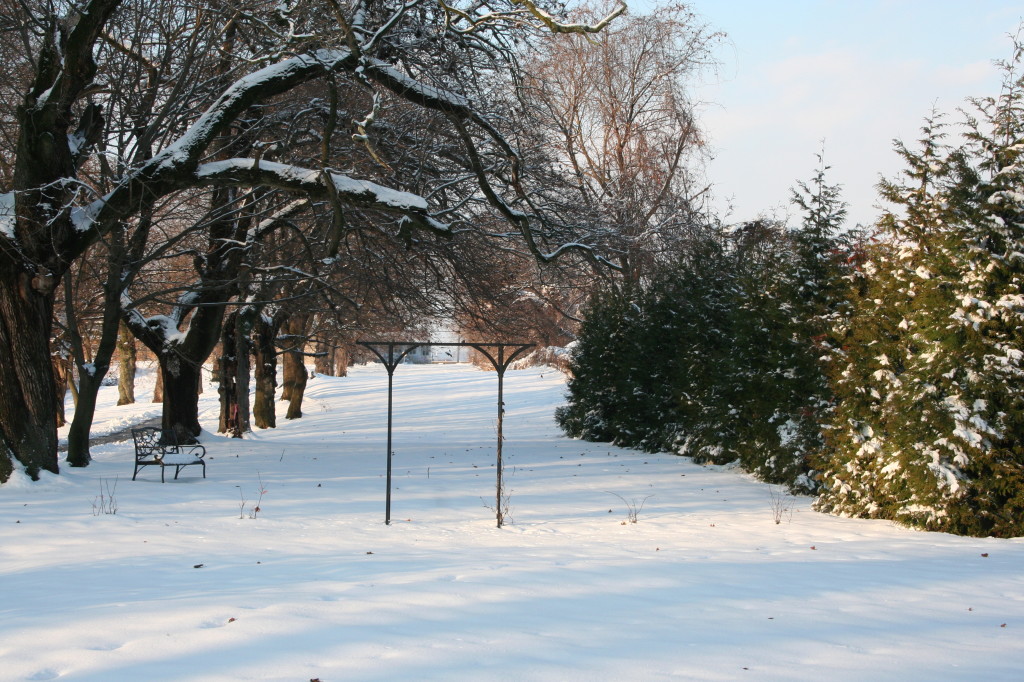
It’s a truism that home is where you come from. Home is where you began.
I disagree. I think home is the place we’re headed. Home is the destination.
Here in my little southern corner of Pennsylvania, winter’s grip is fierce. Not Midwestern or New England fierce, to be sure, but strong enough to leave me feeling more than a little battered. More than a little caged-in.
Replacing the chickens’ frozen water with fresh, I feel like Laura Ingalls herself, but by the fourth trip out to the henhouse the literary novelty has quite worn off.
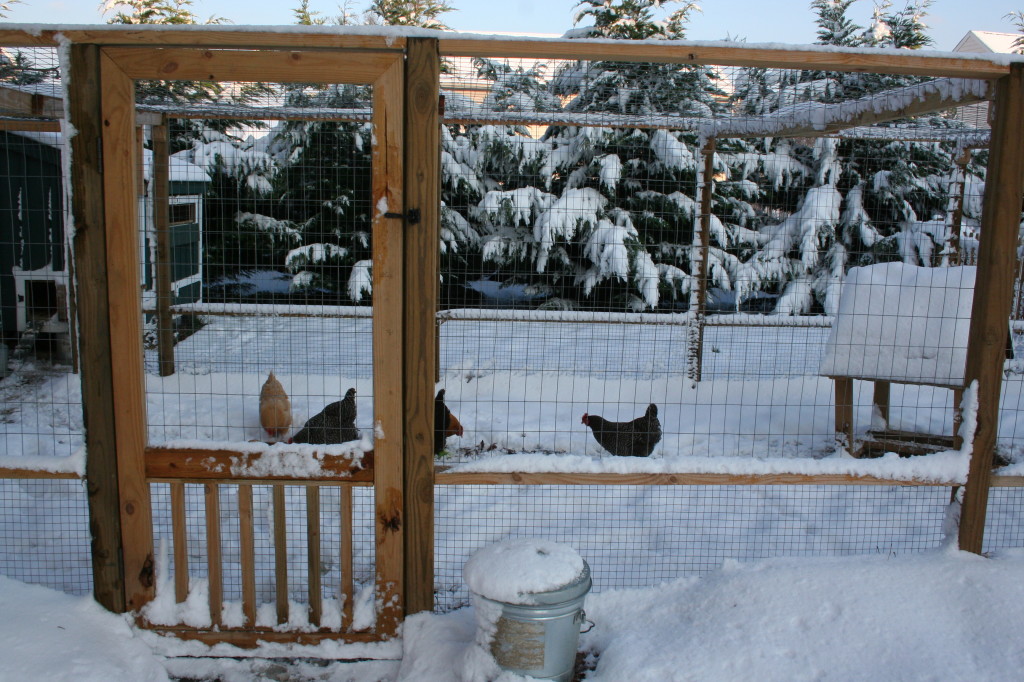
And yet I love winter.
Recently, I dropped the baby in her father’s arms and escaped out the front door with my other daughter, my firstborn. I don’t have ice skates of my own, but I carried hers. We opened the gate in the split-rail fence and we half-slid, half-stumbled down the sledding hill until we could cross the street to the frozen pond.
I stood in the snow, my toes slowly going numb, and I watched my daughter slice one foot and then the other across the ice. I said to myself, “This is Pennsylvania. This is our home.” The word Pennsylvania felt awkward. Perhaps I should blame my frozen lips. Or perhaps not. We are still learning the contours of this place and these people.
She circled the perimeter three times before I made her come in. I might lose my toes, I shouted.

My poor toes. They really did hurt, buried in snow like that, but it was a good kind of pain. Like the sharp, stinging realization that comes at the end of a very long walk. You know you’ve gone farther than you can handle, but it will be worth it. You are so close.
Three times around may have been too much. My daughter fell to her knees only part-way through our climb back up the sledding hill.
You’ll make it, I said. We’re nearly there.
Look! I can see our home from here.
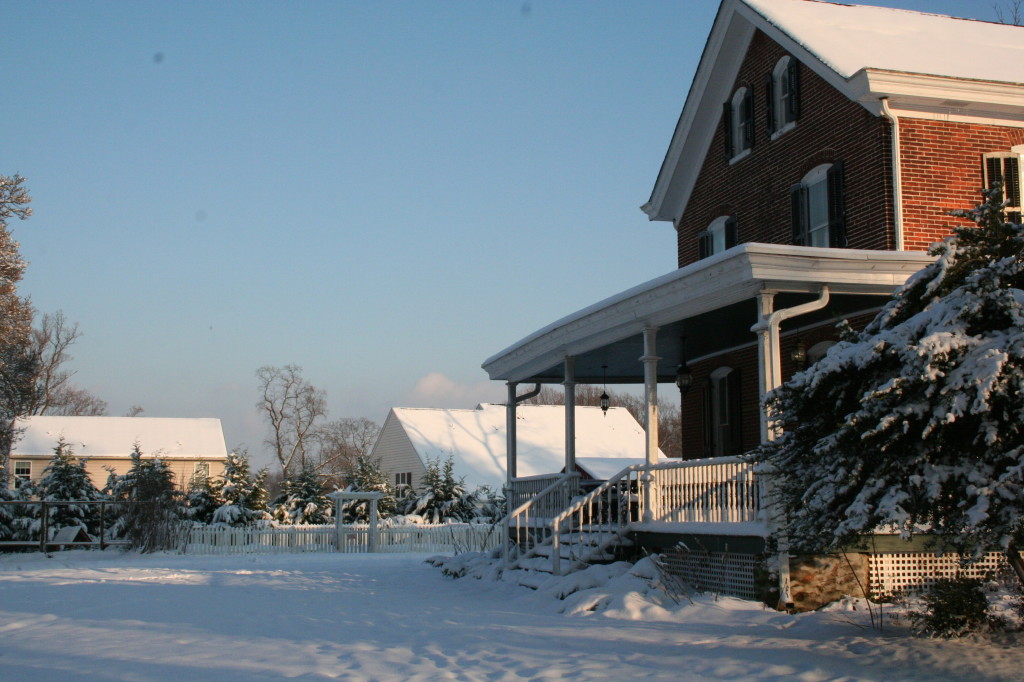
*all photos taken by yours truly (with apologies to our talented, much beloved Photographer)
by Christie Purifoy | Jan 18, 2014 | Books, children, Food, Uncategorized
Last weekend, on facebook, I promised you a peek at the bookshelves in my kitchen.
That’s right, I said, BOOKSHELVES IN MY KITCHEN.
Yes, I have all-caps feelings about the bookshelves in my kitchen. I don’t care all that much about granite countertops or stainlesss steel appliances, but I love having a built-in bookcase for my cookbooks.
Here are three of the books I reach for most often in that room … (p.s. you can see an actual glimpse of my kitchen bookshelves on instagram).

The Homemade Pantry: 101 Foods You Can Stop Buying and Start Making by Alana Chernila is my kind of cookbook. Lovely, big photographs, fun personal introductions before each recipe, everything tasty, nothing too hard.
by Alana Chernila is my kind of cookbook. Lovely, big photographs, fun personal introductions before each recipe, everything tasty, nothing too hard.
Plus, it’s inspiring, never shaming. This isn’t a book to make you feel guilty for buying your sandwich bread. More a book that nudges you to say, “Why wouldn’t I at least try making this if it tastes so good and takes so little extra time?”
At least, that’s the voice I hear as I flip these pages.
Also, despite what you might imagine after reading the subtitle, these are not gimicky recipes. This is good, basic, family food: yes, there are recipes for chocolate peanut butter cups and toaster pastries, but there are also crackers, pasta sauce, and breads. You can learn how (and why) to make your own applesauce, yogurt, and canned tomatoes. I even adopted her granola recipe. Apparently, granola is better with lots of cinnamon and a dash of almond extract.
From the vanilla ice cream to the vanilla extract, this is one of my favorite cookbooks.
Fold down this page. You are going to want to come back to this recipe a lot. If you are going to ditch one packaged thing from your pantry, I suggest the cereal box. – Alana Chernila
One of the biggest changes my family has made in our eating in the past two years is to add fermented foods to our diets. And while stomach bugs and the flu and various colds run rampant through all our friends and neighbors, for two winters in a row, these bugs have mostly passed us by. I no longer spend my winters moving from sore throat to nasty cough and back again, and when my children do get sick, they almost always bounce back quickly.
Fermented foods have been a major part of the human diet around the world for thousands of years, but, in the past 50-100 years, we Americans have stopped consuming them almost entirely. There is growing evidence that we should rethink that.
And don’t let the word fermented frighten you off. I’m talking about yogurt, pickles, sauerkraut, kimchi, and kombucha, the soda-like drink my kids can’t get enough of. So, nothing nasty, everything delicious and tangy.
Real Food Fermentation by Alex Lewin is a good place to start. Again, great photographs, helpful explanations, easy step-by-steps. I used his guidelines for making pickles with last summer’s cucumbers, and we are still enjoying them.
by Alex Lewin is a good place to start. Again, great photographs, helpful explanations, easy step-by-steps. I used his guidelines for making pickles with last summer’s cucumbers, and we are still enjoying them.
Here’s another reason to check out this book: unless you can purchase raw pickled goods from your Amish neighbors (ahem), then you have to make this stuff on your own. The heat-treated pickles on the supermarket shelf have had all of their living, immune-enhancing ingredients cooked out of them in the name of food safety. One exception is kombucha. Buy it from Whole Foods to see if you like it, but one glance at the pricetag and you’ll understand why I make my own.
When we make our own food, we regain some control over our lives – especially at a time in history when many of us feel at the mercy of events, governments, corporations, and industrial food producers. – Alex Lewin
Here is a book to watch out for in the second-hand shops: The Fun of Cooking by Jill Krementz. As a child, I checked this one out of the school library so many times, my parents finally bought me my own copy. I literally loved it to bits.
by Jill Krementz. As a child, I checked this one out of the school library so many times, my parents finally bought me my own copy. I literally loved it to bits.
This is a book for kids by kids (from really little ones to teenagers). The recipes are good and diverse, but the real treat for me has always been the stories. This is a book with an urban/New York bent, and I loved imagining a world where kids my own age might hop on the subway to pick up ingredients for the dinner they’d make before Mom arrived home from work. So, pretty much the opposite of my life then.
It’s quite possible that my city-living dreams began with this book.
And dreams can be passed down. This year, my daughter made the teddy-bear bread for her teacher, just like I used to do.
Last year we had a baby-sitter named Jean Williams who taught me how to make teddy bear bread. I always make two of them so I can give one away to a friend. – Jessica, age ten
Tell me, do you keep books in the kitchen?
by Christie Purifoy | Dec 21, 2013 | Advent, Books, children, Uncategorized
I finished the Christmas grocery shopping today.
That means I have nothing to do for days but read and read and read by the tree. Well, that and wrap presents. I do tend to put that chore off till the last possible minute. And, I suppose the children will still demand to be fed. Strange how they expect regular meals even while on holiday.
But, still, rest assured, there will be a great deal of reading in the days ahead. I hope that proves true for you as well.
Here are a few more favorites from our stack of Christmas stories.
(You can find all my book recommendations here along with a disclaimer about the affiliate links I use.)
***
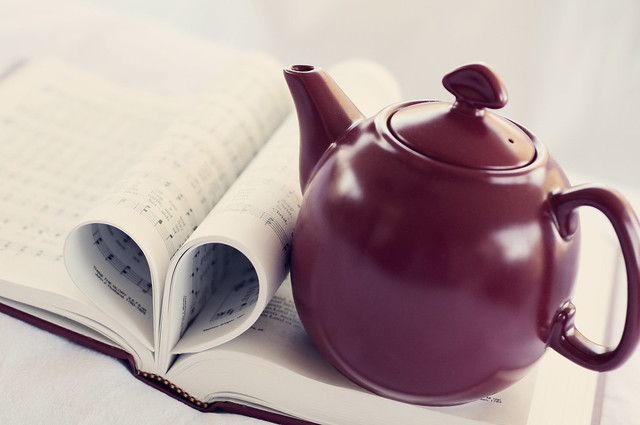
***
Today, I’m recommending three picture books, but wait … these books aren’t really meant for small children. My second-grader and fourth-grader enjoy these, but I would share these books with anyone from an older child to an adult.
This first book would make an especially nice gift for a poetry or art-lover.
It is Robert Frost’s Stopping By Woods on a Snowy Evening with gorgeous illustrations by Susan Jeffers.
with gorgeous illustrations by Susan Jeffers.
With its intricately detailed illustrations of snowy landscapes, this is a book that demands we slow down. My children love to search out the forest animals hidden in each image, and Jeffers gives this familiar poem a lovely, new twist of an ending through her designs.
But I have promises to keep, / And miles to go before I sleep
Christmas Day in the Morning was originally published by Pearl Buck in 1955. This picture-book version features full-color artwork by Mark Buehner.
was originally published by Pearl Buck in 1955. This picture-book version features full-color artwork by Mark Buehner.
If you don’t know the story already, I won’t spoil the surprise. I’ll only say that this one inspired my daughter to shovel the driveway as a Christmas gift to her Dad.
Buck’s classic story always makes me tear up a little. Okay, I have trouble not breaking down whenever I read it out loud.
The best Christmas gift I ever had, and I’ll remember it, son, every year on Christmas morning, so long as I live.
Winter’s Gift is another sentimental favorite (but what’s Christmas without a little sentimentality?). It is written and illustrated by Jane Monroe Donovan and tells the story of an old man spending his first Christmas alone. He is without hope until a horse, lost in the woods, brings with her a very special gift.
is another sentimental favorite (but what’s Christmas without a little sentimentality?). It is written and illustrated by Jane Monroe Donovan and tells the story of an old man spending his first Christmas alone. He is without hope until a horse, lost in the woods, brings with her a very special gift.
‘The star is the most important part of the tree,’ she would always say. ‘It’s a symbol of hope, and no matter how bad things get, you should always have hope.’
by Julie Fogliano and illustrated by Erin Stead is a gorgeous, award-winning, treasure of a book. I recommend it for kids and for any big people in your life who love spring or gardening or quietly humorous storytelling.
by Amy Leach is not like anything you have ever read. I promise you that.
. If you enjoyed Barbara Kingsolver’s Animal, Vegetable, Miracle: A Year of Food Life
then I’m sure you will appreciate Bahnson’s own memoir which explores the spiritual dimensions of the same subject (and if you haven’t read Kingsolver’s book please do go and rectify that).
explores a woman’s identity as first a person and an image bearer of a glorious God.











